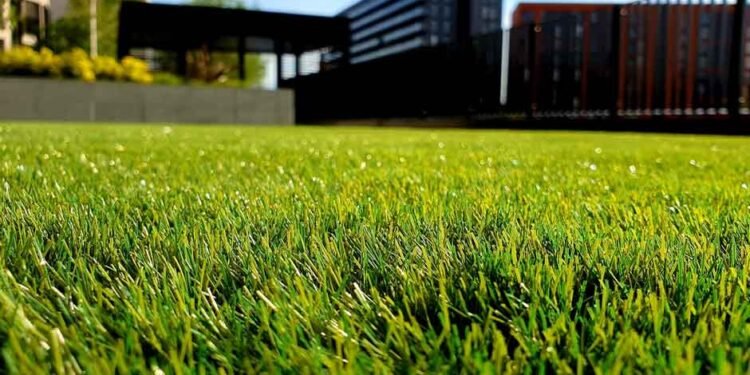Imagine landing upon a lush, green grass that exudes the ideal shade of green and feels as smooth underfoot as a carpet. With the correct care and attention, this classic outdoor fantasy might become a reality. A well-kept lawn not only makes your house seem better, but also creates a calm, welcoming area where kids can play and unwind.
Cultivating the Perfect Soil: The Foundation of Lawn Excellence
The underside of grass is the key to its success. Because healthy soil is the foundation of a vibrant lawn, it is very important. The effectiveness of your lawn care routine can be greatly impacted by your understanding of the kind of soil you have and its nutritional profile. To find out the pH and nutritional content of the soil, first conduct a test. Most grass kinds do best with a pH of 6.0 to 7.0, which is slightly acidic to neutral. Add organic matter, such as compost or peat moss, to the soil to strengthen its structure, retain more water, and hold more nutrients. Another essential component of keeping good soil is aeration. Compaction of the soil can happen over time, restricting the development of roots and decreasing the soil’s capacity to take in water and nutrients.
Strategic Watering Techniques for a Flourishing Lawn
A healthy lawn needs water, but how it is watered can make all the difference. Choose deep, sporadic watering sessions over frequent, superficial ones. As a result, grass roots become more resilient to drought and less vulnerable to illnesses that affect the surface of the soil. Early in the morning, when the temperature is lower, and evaporation rates are lower, is the best time to water. Because of this timing, water can seep deeply into the soil before the day’s heat waves begin. Various soil types and grass kinds call for different watering regimens. Cool-season grasses like fescue and Kentucky bluegrass need more regular watering, whereas warm-season grasses like Bermuda and Zoysia can tolerate higher temperatures.
The Art of Mowing: Crafting a Manicured Lawn
Mowing is an art form that directly affects the health and look of your lawn, not just a mundane chore. Maintaining the grass at the ideal height for its kind is essential to good mowing. The majority of grasses thrive at a height of 2.5 to 3.5 inches. This height promotes the growth of a thicker, greener lawn by enabling the grass to retain a healthy root system and sufficient photosynthesis. Scalping is the practice of cutting grass overly short, which can stress the lawn and expose it to pests and illnesses. Mowing frequency is a crucial factor as well. During the growth season, regular mowing—once a week on average—maintains the grass blades even and avoids thatch development, a covering of dead grass that can choke out the lawn.
Nourishing with Nutrients: The Role of Fertilization
Fertilization gives your grass the vital nutrients it needs to flourish. The three main nutrients—nitrogen, phosphorus, and potassium—are essential to the health of the grass. Phosphorus aids in the formation of roots, potassium increases hardiness and disease resistance, and nitrogen encourages lush, green growth. For the best development, use a balanced fertilizer that meets the nutritional needs of your soil. Schedules for fertilization vary depending on the kind of grass and when it grows. Warm-season grasses need fertilizer treatments in late spring and summer, whereas cool-season grasses benefit from autumn and spring applications. It is advised to use slow-release fertilizers because they provide a consistent supply of nutrients over time, lowering the possibility of overfertilization and the potential for nutrient runoff and environmental harm.
Professional Lawn Care Professional Service: Expert Touch for Pristine Lawns
Hiring an expert lawn care service can significantly improve the look and health of your grass. Professionals can efficiently handle certain lawn care difficulties because they have the necessary tools and knowledge. They can provide services that are above the capacity of the average homeowner, such accurate soil testing, focused pest and disease control, and sophisticated aeration procedures. They can customize maintenance procedures to your lawn’s specific requirements thanks to their understanding of the regional environment and grass types. The ease of complete care programs, which include routine mowing, fertilization, weed control, and seasonal maintenance, is another benefit of hiring professionals. These programs are designed to take care of your lawn all year round, taking care of its health and beauty while relieving you of the complexities of lawn maintenance.
Conclusion
A flawless lawn is evidence of the skillful fusion of science and art in landscape maintenance. This green haven can be further improved and maintained by professionals, resulting in a charming outdoor area that provides beauty and peace all year round. Gaining proficiency in these crucial maintenance techniques will enable you to turn your lawn into a striking, colorful display of organic beauty and charm.












